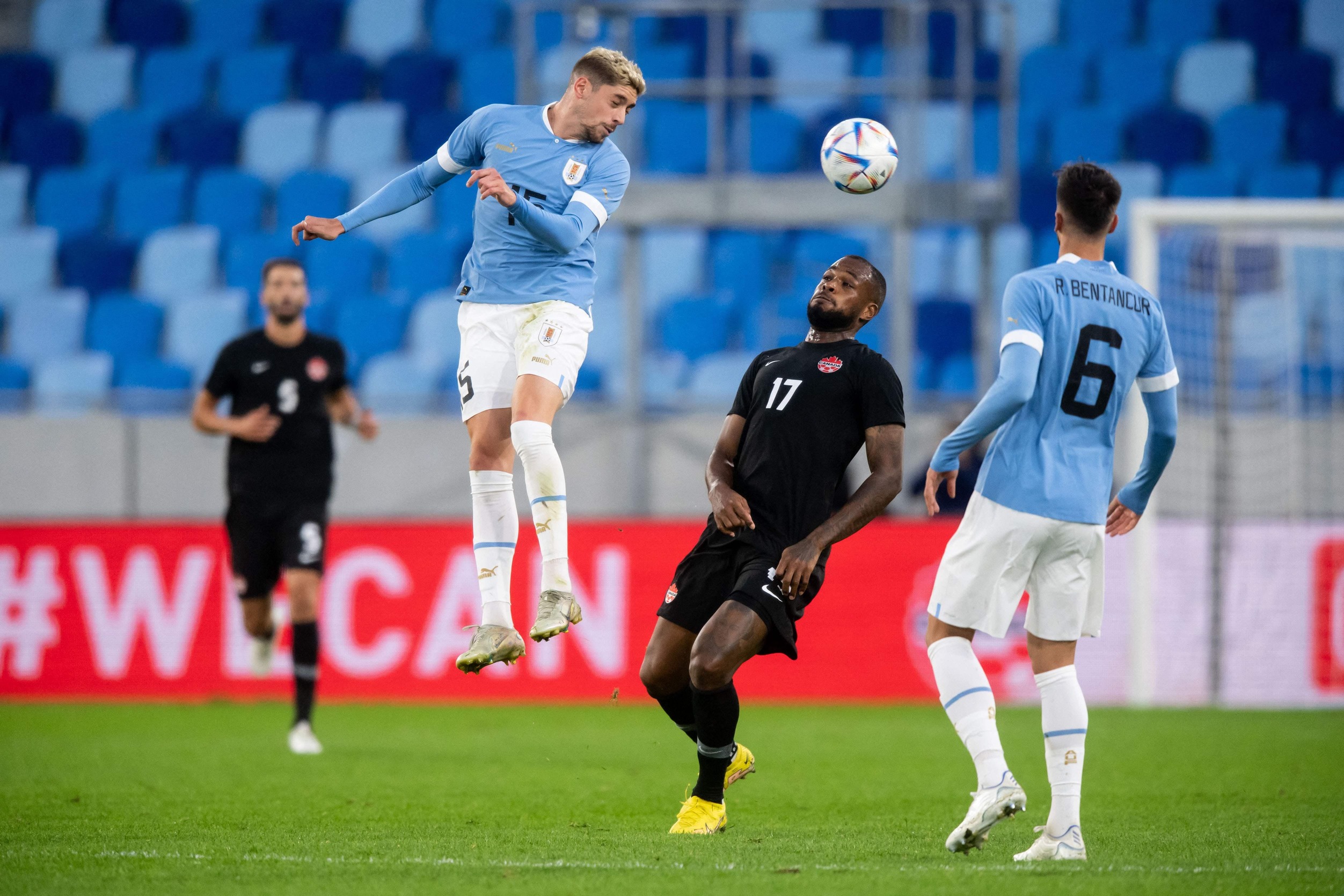In what felt like their first real test against a top 15 national side outside of CONCACAF in a long time, Canada did not win, but they also did not disappoint. The men lost to a strong and organized Uruguayan side 2-0, but there were more than a few positives to take from the match.
Starting XI and initial thoughts
John Herdman decided to go with consistency with his lineup, changing only one player. Richie Laryea came on as well as Steven Vitória, but everyone else was the same as in the previous match against Qatar.
But the lack of changes was telling, signalling that the head coach has a strong idea of who his best XI is. Perhaps it was also foretelling of what to expect in that first World Cup match against Belgium.
The first half
Unfortunately, due to technical difficulties, the game was already at the 18th minute before the broadcast began. By then, Uruguay was already on a goal from Nicolás de la Cruz.
Milan Borjan was being put to work by a solid Uruguayan side. Consistent with his play from the earlier match against Qatar, the Canadian goalkeeper was strong to come off his line and break up plays, even if they were 35 yards out.
Uruguay doubled their lead in the 33rd minute off a header from Darwin Núñez. He was able to get up high over Alistair Johnston, who was caught flat-footed.
After 45 minutes, Canada was given an idea of what playing a top national squad was like. They had another half to try and get back into the match, but the organization and ease of Uruguay would be difficult to break down.
The second half
Canada started the second half strongly. Similar to the first, they had the majority of possession, but that suited Uruguay who were content to let Canada play to the sides and not penetrate into the box.
Everything was moving towards a likely outcome, but the Uruguay substitution of Roberto Bentancur in the 62nd minute gave Canada an opportunity. Easily the best player on the pitch, the removal of the Tottenham Hotspur midfielder was a hole in the middle of the park for Uruguay.
And Canada did move to capitalize. They immediately began to move forward, Jonathan David taking the first of the opportunities. It started with winning the ball in the middle and moving it quickly to Alphonso Davies along the side. His pass to David ended with a strong shot, which made the Uruguayan goalkeeper work for the save.
Canada continued to make changes towards more attack-minded playing, trying to find areas to move in between Uruguay’s lines. But there was nothing getting through the South American side.
Looking back at the match overall, it’s apparent that Canada must work on control inside their opponent’s 18-yard box. Heavy touches were a big part of why Canada did not get on the board. The opportunities were there for the taking, but Uruguay had an easy job in mopping up loose balls.
This match, as well as others, continued to show that work is still required in set pieces. Defensively, Canada was not prepared for that first goal. And offensively, there does not seem to be a definitive corner-kick strategy. Balls are being played either too far to the back post or they are not even making the near one. When it comes to playing higher-ranked nations, set pieces can be the equalizer. Canada would do well to be clear on what its strategy is moving forward.
But Canadians and fans around the world should be reasonably content with what Canada was able to do. True, they did not score, but there were signs of a positive team that came to play against an impressive and organized Uruguay.
It was the first true test of what to expect in November.
Now, those lessons which were given must be taken to heart and learned from.
Up next
Canada will play Japan on November 17 in Dubai. It will be their final warm-up match before the World Cup begins about a week later. Kick-off is at 5:40 a.m. PST.

